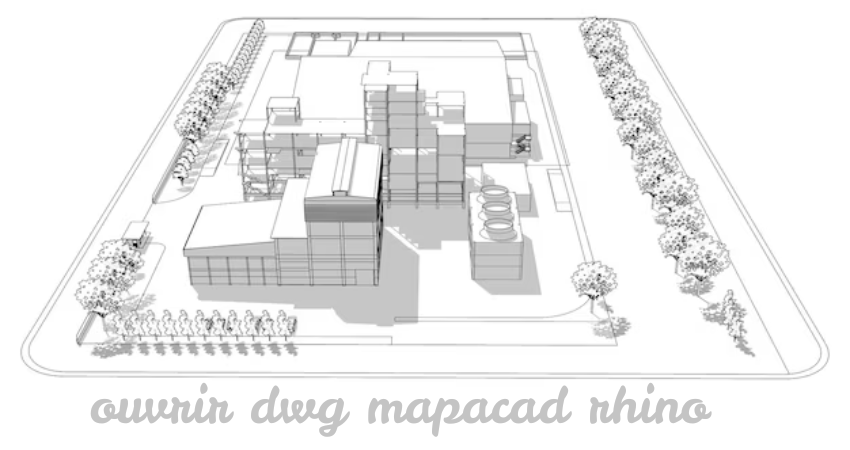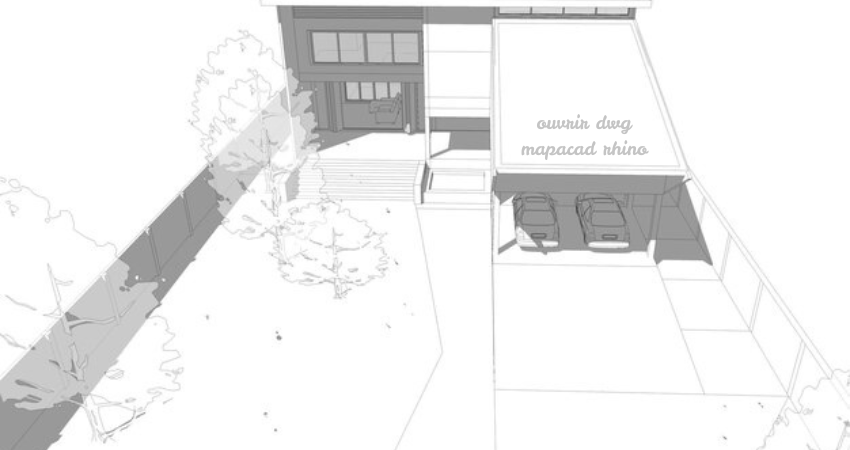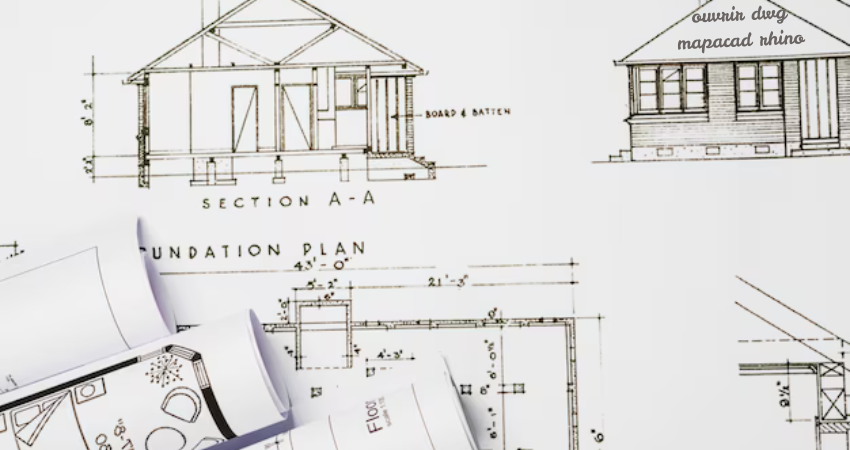When the digital world unfolds, drawing lines in the sand becomes something far more eternal. Architects and designers, with their trusted tools, create worlds—bricks and mortar become curves and angles, each line holding the promise of a dream realized. But what happens when these worlds are bound together by the silent language of DWG files? Today, we embark on the journey of opening these enigmatic files in ouvrir dwg mapacad rhino , unraveling how these platforms bring the intangible into being.
What Are DWG Files and Why Are They Important?
At the heart of every architectural masterpiece lies a blueprint, a design, a ouvrir dwg mapacad rhino . But what is a DWG file? A canvas of technical artistry, this digital drawing file format holds the very essence of architectural design—lines, dimensions, annotations, and layers, all neatly wrapped in one powerful package. Whether it’s a city’s sprawling road network or the smallest details of a building’s façade, DWG ensures everything is accounted for. But this world is not without its hurdles.
The Role of DWG in the World of Design
From mechanical drafts to city planning, DWG files are the backbone of precision in design. They are the chosen format for professionals in the AEC (Architecture, Engineering, and Construction) industry. A simple line here, a complex structure there—it’s all woven into the fabric of a DWG file. It’s the universal language of design, speaking across platforms, yet demanding seamless translation into the software that breathes life into it.

The Compatibility Conundrum: MapCAD vs. Rhino
Yet, even the most beloved formats can falter when faced with software limitations. MapCAD and Rhino are powerful tools in their own right, but how do they handle DWG files? MapCAD, with its geospatial prowess, and Rhino, with its precision modeling, seem to occupy different corners of the design world. And yet, both are perfectly capable of embracing the DWG format. The challenge lies not in their ability but in the process of bringing them together—making the digital blueprint flow smoothly in these environments.
The Power of MapCAD: A Tool for Geospatial Design
MapCAD is where the world of design meets the earth beneath our feet. If you’ve ever needed to incorporate geospatial data into your CAD drawings, this tool is a game-changer. MapCAD integrates DWG files effortlessly, bridging the gap between digital design and real-world geography. But how does it handle the intricate details of a DWG file?
How MapCAD Integrates DWG Files
In MapCAD, the process of opening a DWG file is as seamless as stepping into another world. The tool is designed to handle DWG files with ease, allowing you to bring your digital blueprints into the geospatial realm. The trick lies in the software’s capacity to interpret data—whether that’s scaling it to real-world coordinates or layering geospatial data atop it. Once imported, the DWG file adapts, ready to be molded into a map or a plan for the land.
The Advantages of Using MapCAD for DWG Files
MapCAD offers several advantages when dealing with DWG files, especially in the realm of geospatial design. It provides tools that allow precise scaling, mapping, and analysis of data within the DWG file. Imagine taking a blueprint and transforming it into a tangible map, ready to be laid over real-world terrain. That’s the magic of MapCAD—offering not just a visualization but a connection to the land.
Understanding Rhino: A Tool for Precision and Flexibility
Now, let’s turn our attention to Rhino, the sculptor’s tool in the digital world. Known for its precision and adaptability, Rhino can transform a flat DWG file into a 3D masterpiece. But how does it work its magic with DWG files?
Rhino’s Ability to Handle DWG Files
Rhino’s capacity to handle DWG files lies in its robust import options. From 2D drawings to 3D models, Rhino accepts DWG files with open arms. The key here is precision—Rhino maintains the integrity of your DWG file’s details while allowing you to model and manipulate them in three dimensions. Whether you’re working on architectural renderings or product designs, Rhino transforms your DWG files into a dynamic, adaptable form.
When to Choose Rhino for DWG Design Projects
Rhino is perfect when your DWG file needs to transcend the limitations of 2D. If your design project demands precision, flexibility, and a transformation from drawing to 3D object, Rhino is the tool that will take your vision to the next level. Whether you’re modeling complex curves or creating intricate surfaces, Rhino offers unmatched control over your designs.
Opening a DWG File in MapCAD: Step-by-Step Guide
Now, let’s dive into the practical side of things. Whether you’re a seasoned pro or just beginning your journey with MapCAD, here’s how to bring your DWG file to life.
Preparing Your Environment for Import
Before you even think about importing a DWG file, make sure your MapCAD environment is set up for success. Ensure that your version of MapCAD is compatible with DWG files (most versions are), and configure your workspace for optimal viewing and manipulation of data.
Importing and Adjusting the DWG File in MapCAD
Once you’ve set the stage, the process is as simple as selecting “Import” and choosing your DWG file. MapCAD will automatically adjust the scaling and layers, allowing you to fine-tune settings. If there’s any geospatial data within your DWG, MapCAD will map it accordingly, helping you position it in the real world.
Finalizing Your Work in MapCAD
Once your DWG file is imported, you can adjust, modify, and finalize it. Whether you’re adding annotations or tweaking dimensions, MapCAD offers the flexibility to perfect your design.
Opening a DWG File in Rhino: A Detailed Walkthrough
Like MapCAD, Rhino offers an elegant solution for opening and manipulating DWG files. Let’s walk through the process.
Setting Up Rhino for DWG Files
Before importing, ensure your Rhino settings are configured to handle DWG files efficiently. Check your import settings to preserve layer information and ensure the correct scale.
Importing the DWG and Adjusting Parameters
Once set, the import process is straightforward. Rhino will ask you to confirm the scale and orientation, ensuring your DWG file is positioned accurately within the workspace.
Enhancing Your DWG Experience in Rhino
After importing, Rhino lets you dive deep into modeling. You can convert 2D elements into 3D surfaces or curves, creating an enhanced design experience that goes beyond the flat drawing.
Common Issues and How to Overcome Them
While both ouvrir dwg mapacad rhino make DWG integration seamless, there are common hurdles—mostly related to scaling and file compatibility.

Scaling and Compatibility Issues
Sometimes, the DWG file might not import at the correct scale. In these cases, both MapCAD and Rhino allow you to manually adjust the scaling or modify the import settings to achieve the desired result.
Fixing Common Import Errors in Both MapCAD and Rhino
If you encounter errors during import, such as missing layers or elements, both platforms offer troubleshooting guides and options to re-import or adjust the settings to solve these issues.
The Future of DWG in Geospatial and 3D Design Tools
As technology evolves, DWG files will continue to play a crucial role in the design world. The future promises even more integration, with AI and machine learning enhancing the way we interact with these digital blueprints.
Conclusion: Your Path to Digital Masterpieces
Opening ouvrir dwg mapacad rhino is not just a technical task—it’s a creative journey. Each tool offers unique features that enhance the way we approach design, and understanding how to navigate this process opens doors to countless possibilities. Whether you’re shaping the earth’s surface or crafting intricate 3D models, these platforms help bring your vision into the digital world with precision and grace.
FAQs
1. What is the best software for working with DWG files?
Both MapCAD and Rhino are excellent, depending on your specific needs—MapCAD for geospatial work, Rhino for 3D modeling.
2. Can I open DWG files directly in Rhino?
Yes, Rhino supports DWG files, allowing for both 2D and 3D import with precision.
3. Are there common issues when importing DWG files into these tools?
Scaling and layer compatibility issues can occur, but both MapCAD and Rhino offer solutions to fix them.
4. How do I adjust the scale of my DWG file in Rhino?
Use the “Scale” options in Rhino after importing your DWG to adjust dimensions and alignment.
5. Is it possible to convert a 2D DWG drawing into 3D in MapCAD or Rhino?
Yes, both platforms allow for the conversion of 2D elements into 3D models, though Rhino is more suited for complex 3D transformations.


